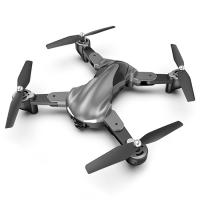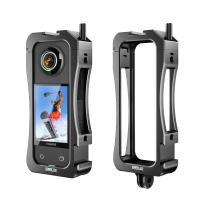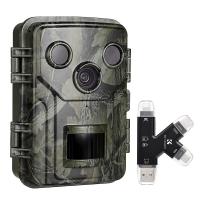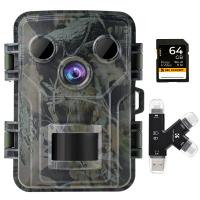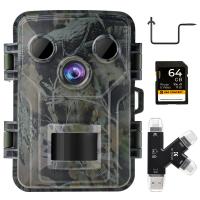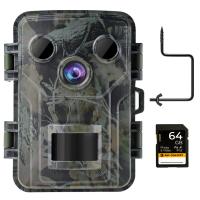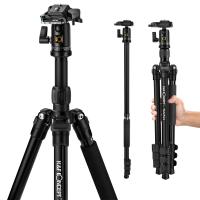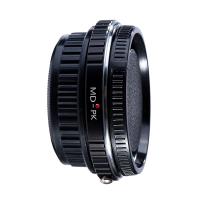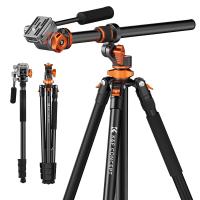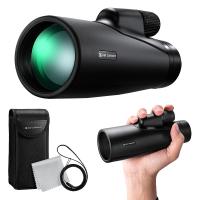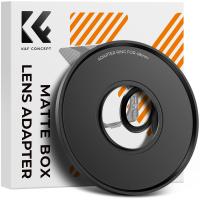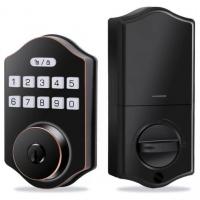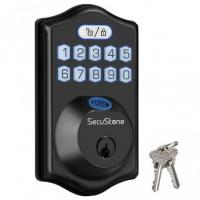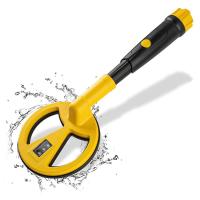How To Install A Smart Key Lock?
Installing a smart key lock can significantly enhance the security and convenience of your home. With the rise of smart home technology, more homeowners are opting for smart key locks to replace traditional locks. This article will guide you through the process of installing a smart key lock, addressing common user demands and providing practical solutions to potential issues.

Understanding Smart Key Locks
Before diving into the installation process, it’s essential to understand what a smart key lock is and how it functions. A smart key lock is an electronic lock that allows you to lock and unlock your door using various methods such as a smartphone app, a keypad, a fingerprint, or even voice commands. These locks often come with additional features like remote access, activity logs, and integration with other smart home devices.
Tools and Materials Needed
To install a smart key lock, you will need the following tools and materials:
- A screwdriver (usually a Phillips head)
- The smart key lock kit (which includes the lock, mounting hardware, and instructions)
- A measuring tape
- A pencil
- A drill (if new holes are required)
- Batteries (if not included with the lock)
Step-by-Step Installation Guide
1. Remove the Existing Lock
The first step in installing a smart key lock is to remove the existing lock. Use a screwdriver to unscrew the screws on the interior side of the door. Once the screws are removed, pull the interior and exterior parts of the lock apart. Remove the latch mechanism from the edge of the door by unscrewing it.
2. Prepare the Door
Before installing the new lock, ensure that the door is properly prepared. Check the alignment of the holes and the size of the borehole. Most smart key locks are designed to fit standard door sizes, but you may need to make adjustments if your door is non-standard. Use a measuring tape to verify the dimensions and a pencil to mark any necessary adjustments.
3. Install the Latch
Insert the new latch mechanism into the edge of the door. Ensure that the latch is oriented correctly, with the slanted side facing the direction the door closes. Secure the latch with the screws provided in the smart key lock kit. Make sure the latch is flush with the edge of the door and operates smoothly.
4. Attach the Exterior Lock
Next, attach the exterior part of the smart key lock. Align the exterior lock with the borehole and insert the tailpiece through the latch mechanism. Hold the exterior lock in place while you move to the interior side of the door.
5. Install the Interior Lock
On the interior side of the door, align the mounting plate with the tailpiece and the screw holes. Secure the mounting plate with the screws provided. Once the mounting plate is secure, attach the interior lock mechanism. Depending on the model, you may need to connect wires or insert batteries at this stage. Follow the manufacturer’s instructions carefully.
6. Test the Lock
Before finalizing the installation, test the lock to ensure it operates correctly. Use the keypad, smartphone app, or other methods to lock and unlock the door. Make sure the latch extends and retracts smoothly and that the door opens and closes without any issues.
7. Secure the Lock
Once you’ve confirmed that the lock is functioning correctly, secure all screws and components. Double-check that everything is tight and properly aligned. If your smart key lock includes a cover for the interior mechanism, attach it now.
Troubleshooting Common Issues
Even with careful installation, you may encounter some issues. Here are common problems and their solutions:
Misalignment
If the lock doesn’t operate smoothly, it may be misaligned. Check the alignment of the latch and the strike plate. Adjust the position of the strike plate if necessary.
Connectivity Issues
If your smart key lock relies on Wi-Fi or Bluetooth, ensure that your home network is functioning correctly. Check the signal strength and move the router closer if needed. Also, make sure the lock’s firmware is up to date.
Battery Problems
If the lock isn’t responding, the batteries may be dead or improperly installed. Replace the batteries and ensure they are inserted correctly. Some smart locks have a low-battery indicator; pay attention to this feature.
Integrating with Smart Home Systems
One of the significant advantages of a smart key lock is its ability to integrate with other smart home devices. Here’s how you can enhance your smart home experience:
Connecting to a Smart Hub
Many smart key locks can connect to a smart hub like Amazon Echo, Google Home, or Apple HomeKit. Follow the manufacturer’s instructions to link your lock to the hub. This integration allows you to control the lock using voice commands and automate it with other smart devices.
Setting Up Automation
Use your smart home app to set up automation. For example, you can program the lock to automatically lock at a specific time each night or unlock when you arrive home. These automations can enhance security and convenience.
Monitoring Activity
Most smart key locks come with an activity log feature. Use the app to monitor who enters and exits your home and at what times. This feature is particularly useful for keeping track of family members or guests.
Maintenance Tips
To ensure your smart key lock continues to function correctly, follow these maintenance tips:
Regularly Check Batteries
Smart key locks rely on batteries, so it’s essential to check them regularly. Replace the batteries as needed to avoid being locked out.
Keep Firmware Updated
Manufacturers often release firmware updates to improve functionality and security. Check for updates regularly and install them promptly.
Clean the Lock
Dust and debris can affect the lock’s performance. Clean the exterior and interior components with a soft cloth. Avoid using harsh chemicals that could damage the lock.
Installing a smart key lock is a straightforward process that can significantly enhance your home’s security and convenience. By following this step-by-step guide, you can successfully install your smart key lock and integrate it with your smart home system. Remember to troubleshoot any issues that arise and maintain the lock regularly to ensure it continues to function correctly. With your new smart key lock, you can enjoy the peace of mind that comes with advanced security technology.



